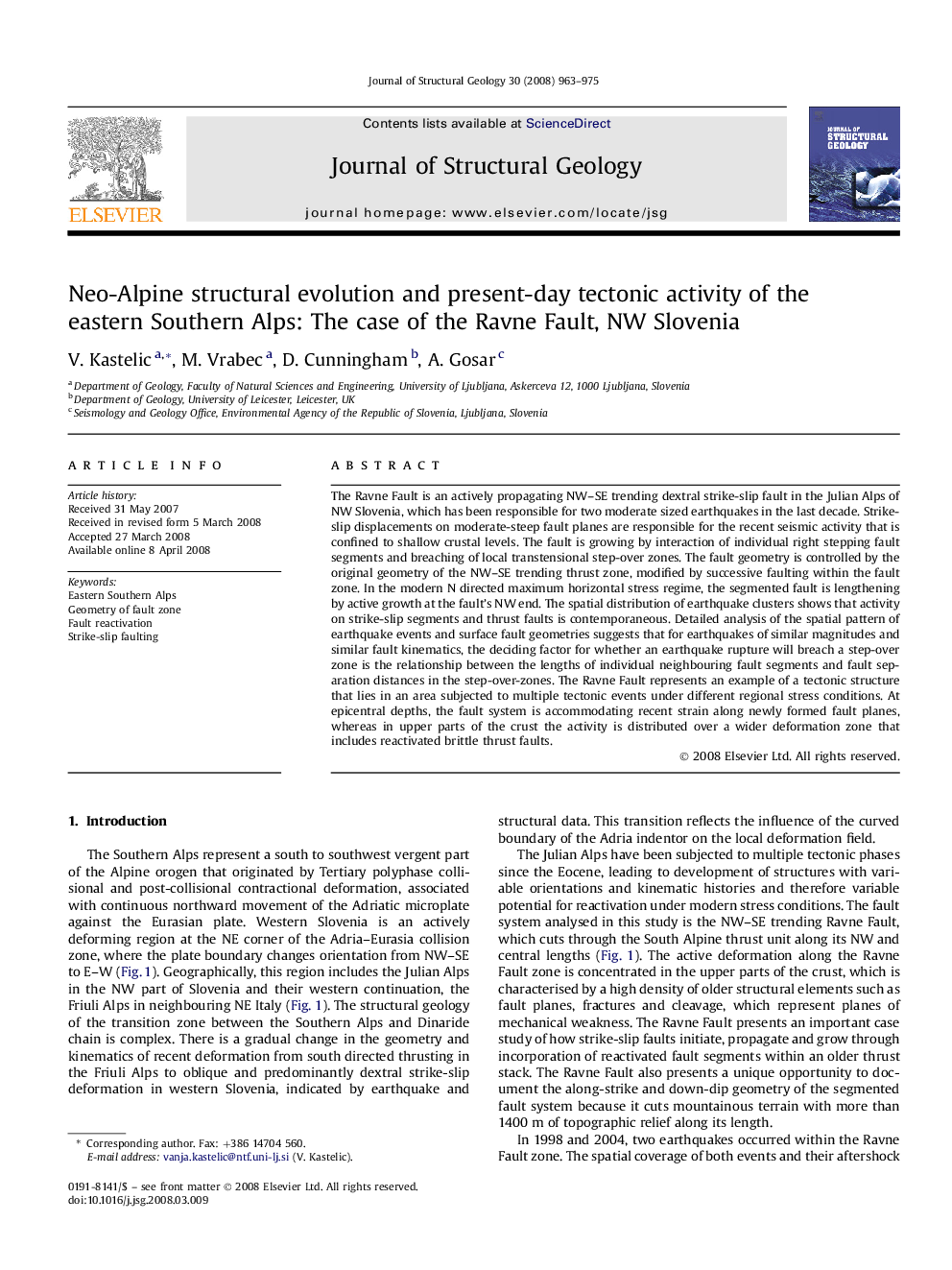| Article ID | Journal | Published Year | Pages | File Type |
|---|---|---|---|---|
| 4733646 | Journal of Structural Geology | 2008 | 13 Pages |
The Ravne Fault is an actively propagating NW–SE trending dextral strike-slip fault in the Julian Alps of NW Slovenia, which has been responsible for two moderate sized earthquakes in the last decade. Strike-slip displacements on moderate-steep fault planes are responsible for the recent seismic activity that is confined to shallow crustal levels. The fault is growing by interaction of individual right stepping fault segments and breaching of local transtensional step-over zones. The fault geometry is controlled by the original geometry of the NW–SE trending thrust zone, modified by successive faulting within the fault zone. In the modern N directed maximum horizontal stress regime, the segmented fault is lengthening by active growth at the fault's NW end. The spatial distribution of earthquake clusters shows that activity on strike-slip segments and thrust faults is contemporaneous. Detailed analysis of the spatial pattern of earthquake events and surface fault geometries suggests that for earthquakes of similar magnitudes and similar fault kinematics, the deciding factor for whether an earthquake rupture will breach a step-over zone is the relationship between the lengths of individual neighbouring fault segments and fault separation distances in the step-over-zones. The Ravne Fault represents an example of a tectonic structure that lies in an area subjected to multiple tectonic events under different regional stress conditions. At epicentral depths, the fault system is accommodating recent strain along newly formed fault planes, whereas in upper parts of the crust the activity is distributed over a wider deformation zone that includes reactivated brittle thrust faults.
